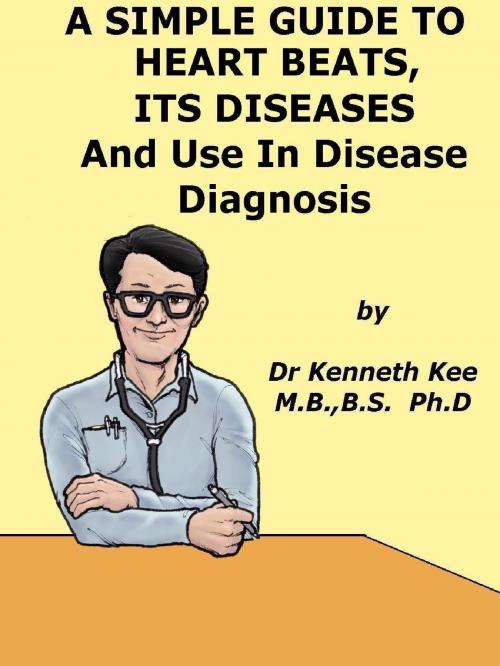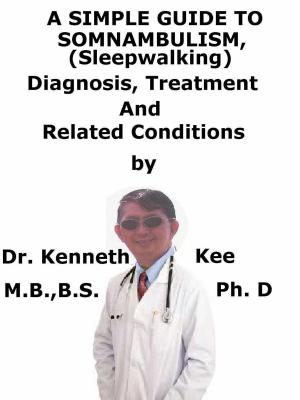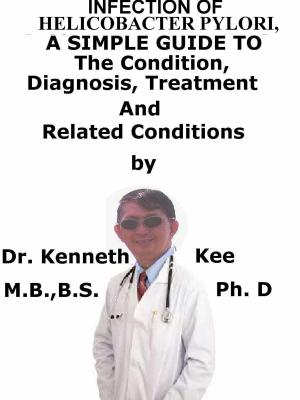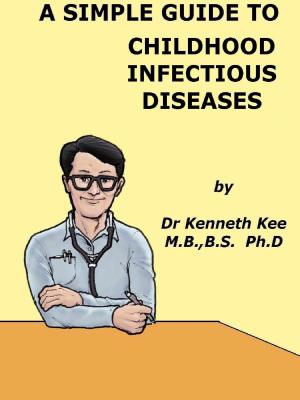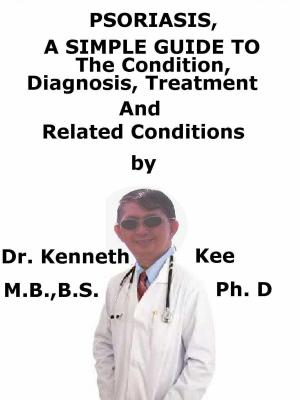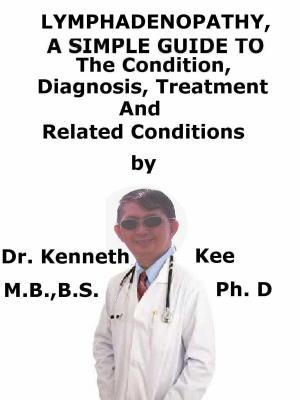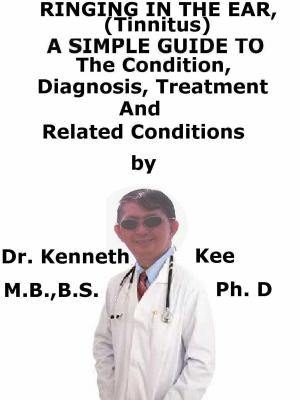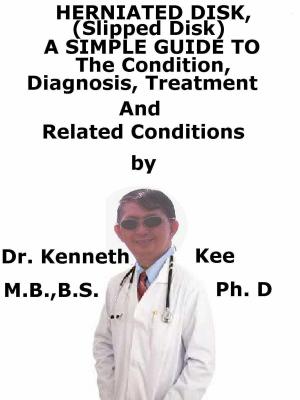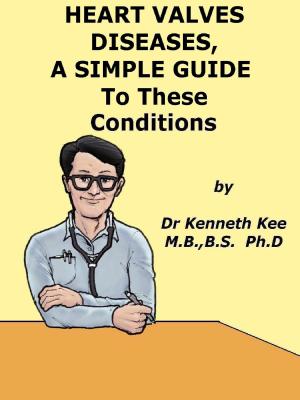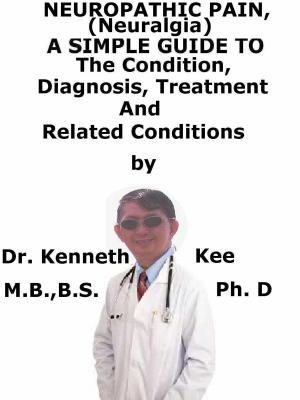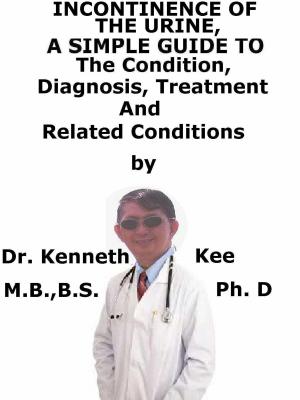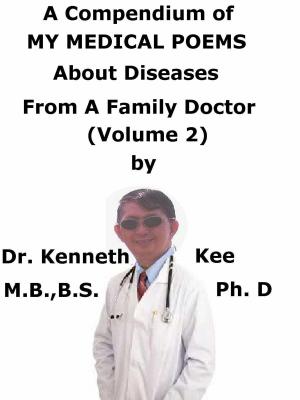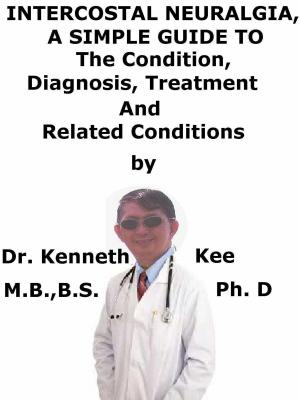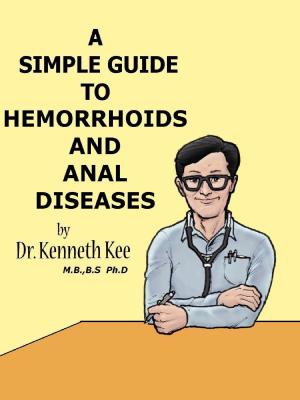A Simple Guide to the Heart beats, Related Diseases And Use in Disease Diagnosis
Nonfiction, Health & Well Being, Medical, Specialties, Internal Medicine, Cardiology, Health, Ailments & Diseases, Heart| Author: | Kenneth Kee | ISBN: | 9781301844463 |
| Publisher: | Kenneth Kee | Publication: | June 2, 2013 |
| Imprint: | Smashwords Edition | Language: | English |
| Author: | Kenneth Kee |
| ISBN: | 9781301844463 |
| Publisher: | Kenneth Kee |
| Publication: | June 2, 2013 |
| Imprint: | Smashwords Edition |
| Language: | English |
The heart is the center of the cardiovascular system.
It is a muscular pump of interconnected, branching muscle fibers located between the lungs with two-thirds of the area to the le ft of the midline of the body. Its upper portion or base is at the level of the second rib while lower portion or apex points downwards and to the left resting on the diaphragm at the level of the fifth rib.
It is enclosed by a white fibrous sac called the pericardium which has 2 layers between which is a lubricating fluid facilitating the movement of the heart as it contracts and expands.
The inner lining of the sac forms the outer lining of the heart and is called the epicardium.
The heart wall has a middle layer called the myocardium which consists of thick bands of involuntary striated muscular tissue responsible for the heart to pump blood.
A third layer the endocardium is a thin layer of flat cells covering the heart valves and lining the inner cavities of the heart.
The human heart has four chambers which are the two superior atria and two inferior ventricles.
The atria are the receiving chambers and the ventricles are the discharging chambers
Deoxygenated blood flows through the heart in one direction, entering through the superior vena cava into the right atrium and is pumped through the tricuspid valve into the right ventricle before being pumped out through the pulmonary valve to the pulmonary arteries into the lungs.
The oxygen is absorbed from the air sacs of the lungs.
It returns from the lungs through the pulmonary veins to the left atrium where it is pumped through the mitral valve into the left ventricle before leaving through the aortic valve to the aorta
What is the heart beat?
The heart beat consists of the alternate contractions and relaxations of the atria and ventricles. The heart beat is heard in a stethoscope as 2 sounds “lub-dub”, the first resulting from the closure of the mitral and tricuspid valves and contraction of the ventricles, the second shorter and snapping sound resulting from the closure of the aortic and pulmonary valves.
The pumping action is one of contraction or systole and relaxation or diastole. This is followed by a brief rest period. The rhythm requires a balance of calcium, sodium and potassium in the heart muscle.
A normal resting heart rate for adult ranges from 60 to 100 beats a minute.
A lower heart rate at rest implies more efficient heart function and better cardiovascular fitness.
In a well-trained athlete the normal resting heart rate is closer to 40 beats a minute.
The heart generates its own electrical impulse which can be recorded by placing electrodes on the chest.
The cardiac electrical impulse controls the heartbeat in two ways:
-
First since each impulse leads to one heartbeat the number of electrical impulses determines the heart rate.
-
Second, as the electrical signal spreads across the heart, it stimulates the heart muscle to contract in the correct sequence thus coordinating each heartbeat and assuring that the heart works as efficiently as possible.
A region of the human heart called the sinoatrial (SA) node or pacemaker sets the rate and timing at which all cardiac muscle cells contract.
The SA node generates electrical impulses which spread rapidly through the walls of the atria causing both atria to contract in unison.
As the electrical impulse passes through the atria, it generates the so-called "P" wave on the ECG.
Here, the impulses are delayed for about 0.1s (the PR interval) before spreading to the walls of the ventricle.
The delay ensures that the atria empty completely into the ventricles before the ventricles contract.
Specialized muscle fibers called Purkinje fibers then conduct the signals to the apex of the heart along and throughout the ventricular walls.
This generates the “QRS complex” on the ECG
The heart is the center of the cardiovascular system.
It is a muscular pump of interconnected, branching muscle fibers located between the lungs with two-thirds of the area to the le ft of the midline of the body. Its upper portion or base is at the level of the second rib while lower portion or apex points downwards and to the left resting on the diaphragm at the level of the fifth rib.
It is enclosed by a white fibrous sac called the pericardium which has 2 layers between which is a lubricating fluid facilitating the movement of the heart as it contracts and expands.
The inner lining of the sac forms the outer lining of the heart and is called the epicardium.
The heart wall has a middle layer called the myocardium which consists of thick bands of involuntary striated muscular tissue responsible for the heart to pump blood.
A third layer the endocardium is a thin layer of flat cells covering the heart valves and lining the inner cavities of the heart.
The human heart has four chambers which are the two superior atria and two inferior ventricles.
The atria are the receiving chambers and the ventricles are the discharging chambers
Deoxygenated blood flows through the heart in one direction, entering through the superior vena cava into the right atrium and is pumped through the tricuspid valve into the right ventricle before being pumped out through the pulmonary valve to the pulmonary arteries into the lungs.
The oxygen is absorbed from the air sacs of the lungs.
It returns from the lungs through the pulmonary veins to the left atrium where it is pumped through the mitral valve into the left ventricle before leaving through the aortic valve to the aorta
What is the heart beat?
The heart beat consists of the alternate contractions and relaxations of the atria and ventricles. The heart beat is heard in a stethoscope as 2 sounds “lub-dub”, the first resulting from the closure of the mitral and tricuspid valves and contraction of the ventricles, the second shorter and snapping sound resulting from the closure of the aortic and pulmonary valves.
The pumping action is one of contraction or systole and relaxation or diastole. This is followed by a brief rest period. The rhythm requires a balance of calcium, sodium and potassium in the heart muscle.
A normal resting heart rate for adult ranges from 60 to 100 beats a minute.
A lower heart rate at rest implies more efficient heart function and better cardiovascular fitness.
In a well-trained athlete the normal resting heart rate is closer to 40 beats a minute.
The heart generates its own electrical impulse which can be recorded by placing electrodes on the chest.
The cardiac electrical impulse controls the heartbeat in two ways:
-
First since each impulse leads to one heartbeat the number of electrical impulses determines the heart rate.
-
Second, as the electrical signal spreads across the heart, it stimulates the heart muscle to contract in the correct sequence thus coordinating each heartbeat and assuring that the heart works as efficiently as possible.
A region of the human heart called the sinoatrial (SA) node or pacemaker sets the rate and timing at which all cardiac muscle cells contract.
The SA node generates electrical impulses which spread rapidly through the walls of the atria causing both atria to contract in unison.
As the electrical impulse passes through the atria, it generates the so-called "P" wave on the ECG.
Here, the impulses are delayed for about 0.1s (the PR interval) before spreading to the walls of the ventricle.
The delay ensures that the atria empty completely into the ventricles before the ventricles contract.
Specialized muscle fibers called Purkinje fibers then conduct the signals to the apex of the heart along and throughout the ventricular walls.
This generates the “QRS complex” on the ECG
